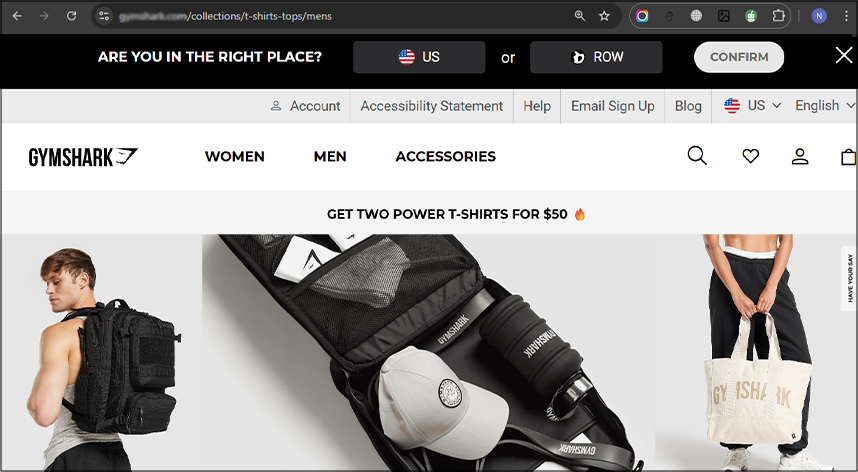Checking websites using Shopify helps confirm whether a store is built on the Shopify platform, which is important for understanding its functionality and identifying unique features of the store. This process ensures you can easily distinguish between Shopify stores from those built on other platforms.
It is essential to know the methods to check Shopify websites, including inspecting the site source code for Shopify-specific scripts or looking for "Powered by Shopify”. Also, there are tools to identify e-commerce platforms, which can help verify if a website is running on Shopify.
Common Shopify elements, like product page layout, shopping cart design, and checkout system, help differentiate Shopify websites from others. These elements are often indicators that a website is using Shopify.
Why is it Important to check Website Using Shopify?
Checking whether a website uses Shopify is important for looking into its functionality, strengths, and limitations. This allows competitive analysis, helps to identify which tools and features a competitor uses, and how their user experience is structured. It is useful for understanding how successful Shopify stores optimize conversion, user experience, and search visibility. These elements directly guide improvement areas in your stores, like product categorization, layout improvement, and optimizing your e-commerce strategy.
For Consumers
- Reliable and Secure Platform: Shopify is a popular e-commerce platform known for its reliability and security features. It provides strong encryption protocols, secure payment gateways, and regular updates to ensure the protection of customer data and transactions.
- Seamless User Experience: Shopify sites provide a user-friendly shopping experience, with fast loading times, easy navigation, and a mobile-responsive design. This platform ensures customers can shop effortlessly across devices.
-
Payment Options: Shopify supports various payment methods like credit and debit Cards, digital wallets, cryptocurrency payments, bank transfer, and many other alternative options, making a seamless shopping experience for customers.
For Business Owners and Developers - Technical Insights: Identifying the Shopify platform using the website can provide insights into its technical setup, functionality, theme, and app integrations.
- Competitive Analysis: Identifying Shopify-powered competitors can help improve your performance by identifying opportunities for improvement and analyzing their strengths, weaknesses, customer reviews, marketing strategies, and overall customer experience.
- Learning from others: Analyzing successful Shopify stores can provide insights into effective marketing strategies, product presentation, and customer engagement tactics.
For Market Researchers
- Market Trends: Examining the prevalence of Shopify-powered websites can provide data on market trends and customer behavior.
What are the Methods to Check Shopify Websites?
To determine whether a website is built on Shopify, there are many different methods to confirm it. Shopify, as a popular e-commerce platform, leaves many clues in its website structure that can easily be identified. From inspecting the page source to using dedicated online tools, these methods help you accurately verify that a website is powered by Shopify.
- View Page Source.
- URL Structure.
-
Browser Extension.
1. View Page Source

Right click on the page and select View Page Source or Inspect. Alternatively, use Ctrl+U to open the page source directly. Press the Ctrl+F search function for searching Shopify-specific tags such as .js script tags and CSS classes that include shopify.com, or cdn.shopify.com.
2. URL Structure

Shopify stores use specific URL structures like /collections/ or /products/ for product and collection pages. By examining a store URL, you can identify these patterns to determine if the site is built on Shopify.
3. Browser Extension

Tools like Wappalyzer and BuiltWith offer straightforward methods for analyzing websites to identify which eCommerce platform is used.
What are Common Shopify Elements?
Common Shopify elements are special features and components that are commonly found on websites built using the Shopify platform. These structural and functional elements can help identify a Shopify store and set it apart from sites on other platforms. This straightforward approach, based on common Shopify elements, ensures accuracy in identifying stores without relying on third-party tools.
Checkout Page: Shopify has a distinctive checkout process. Try adding a product to the cart and proceeding to checkout. If the URL contains "https://storename.com/checkouts/", this indicates that you are in the checkout process of the Shopify store. The checkout page has a consistent design and functionality across Shopify sites.
Product Page: Each product page on Shopify stores maintains a consistent layout with the structured elements, including product title, description, variant images, add to cart button, reviews, price, and related products.
Domain: While many Shopify stores use custom domains, if not by default, Shopify domains end with https://storename.myshopify.com.
Shopify Admin Login: The admin login URL for Shopify stores is in the format of https://yourstorename.myshopify.com/admin or https://yourstorename.com/admin. This URL redirects to the Shopify admin login page, which is accessible only by the store owner or authorized staff members. The Shopify Admin dashboard enables the store owner to manage and oversee all aspects of their Shopify store.










